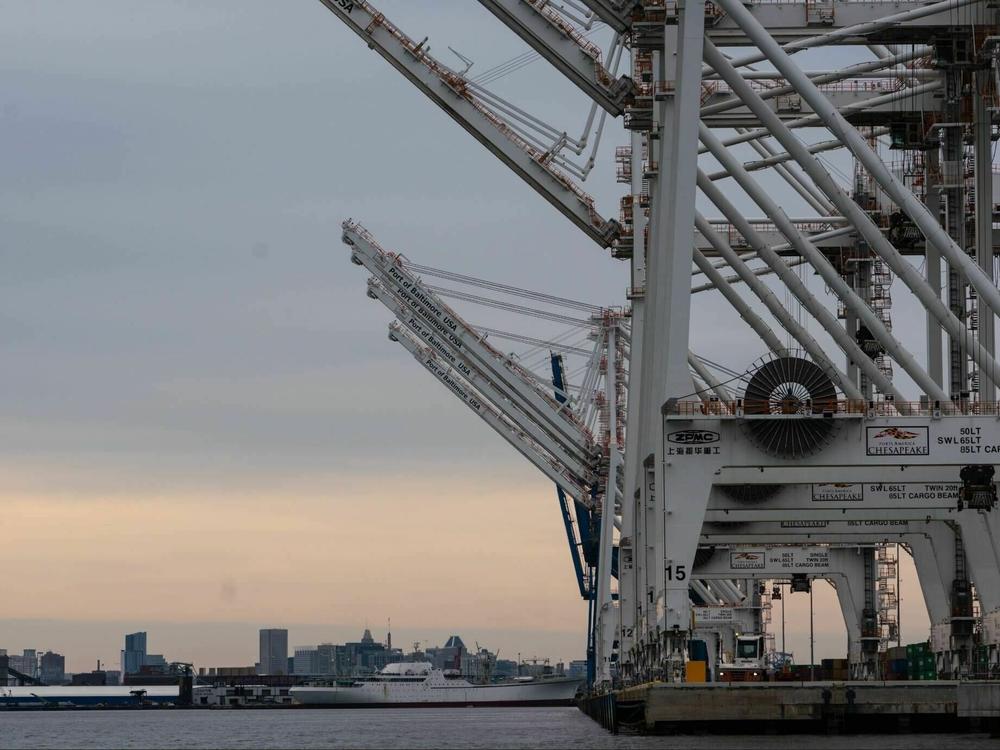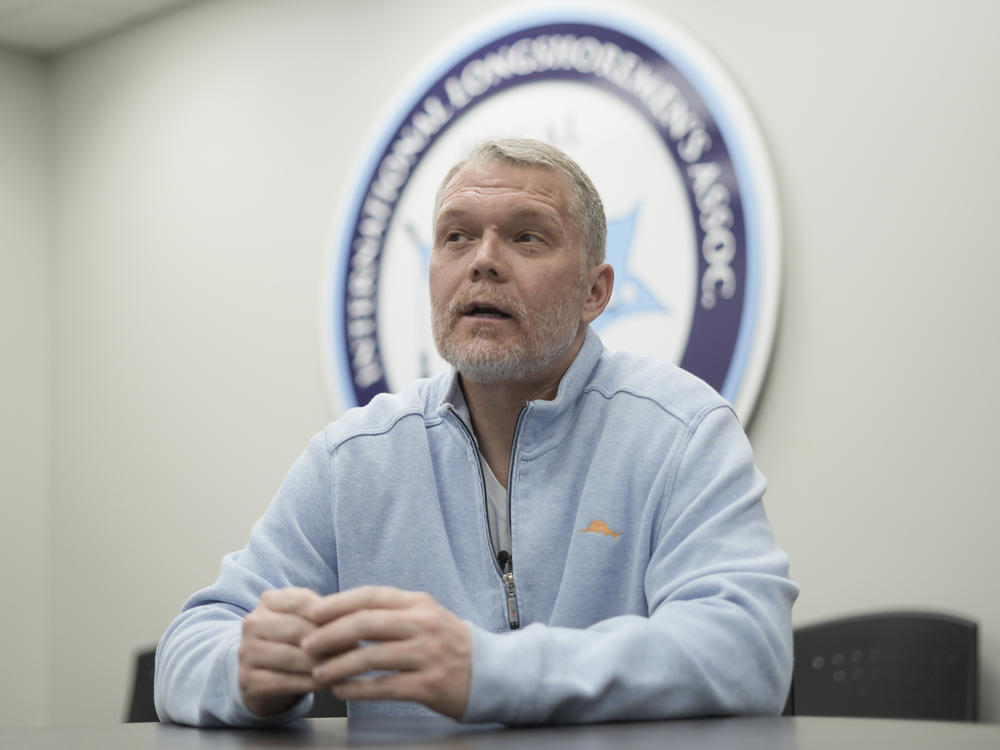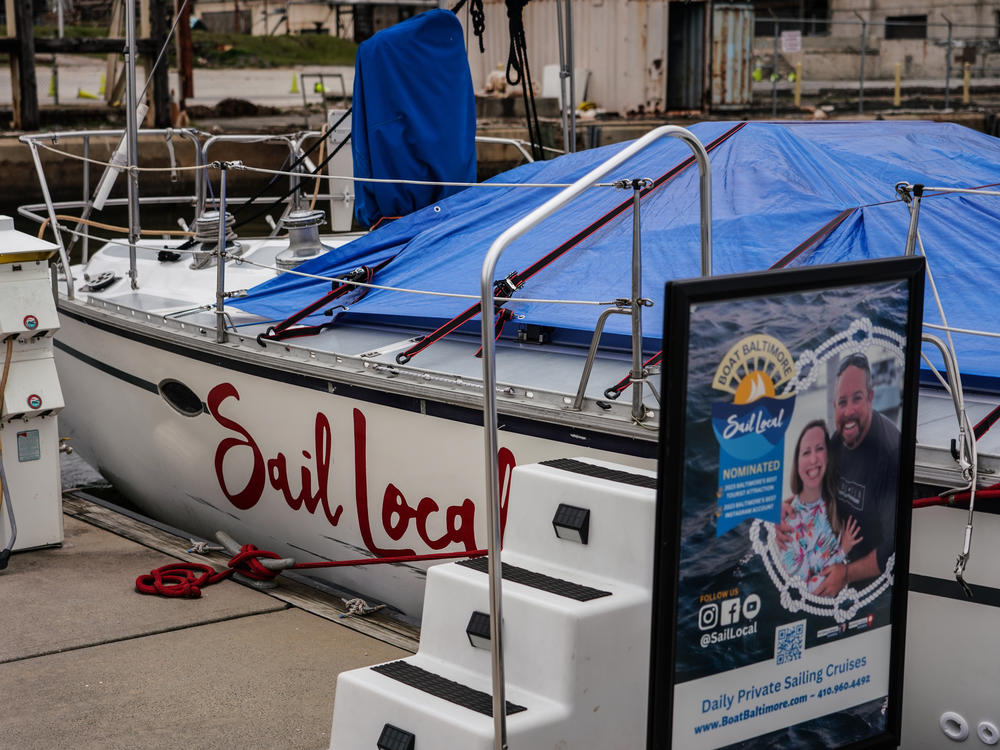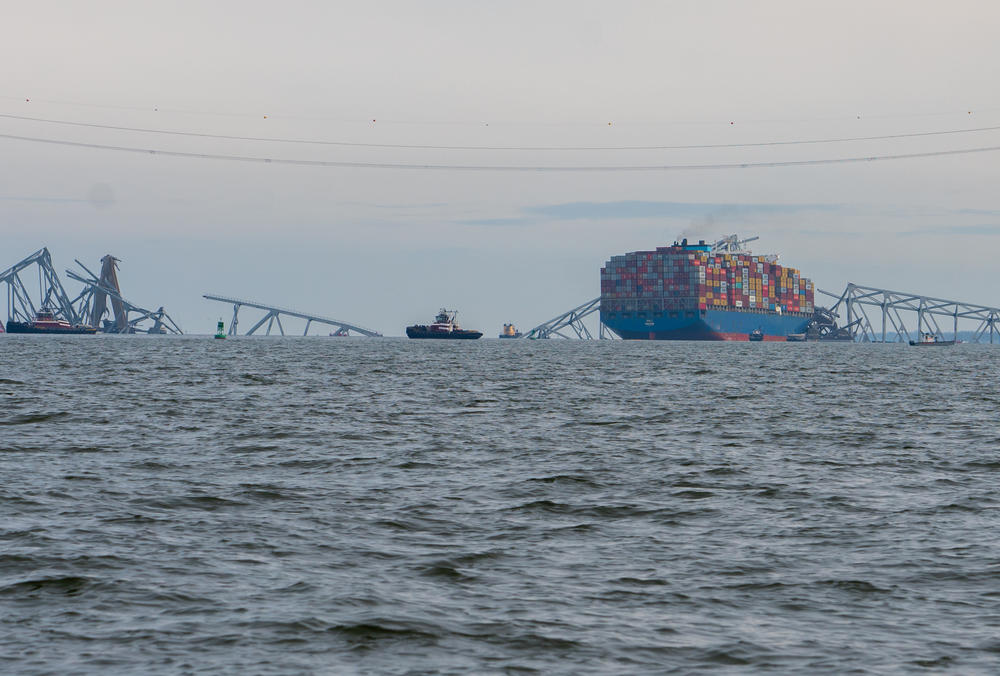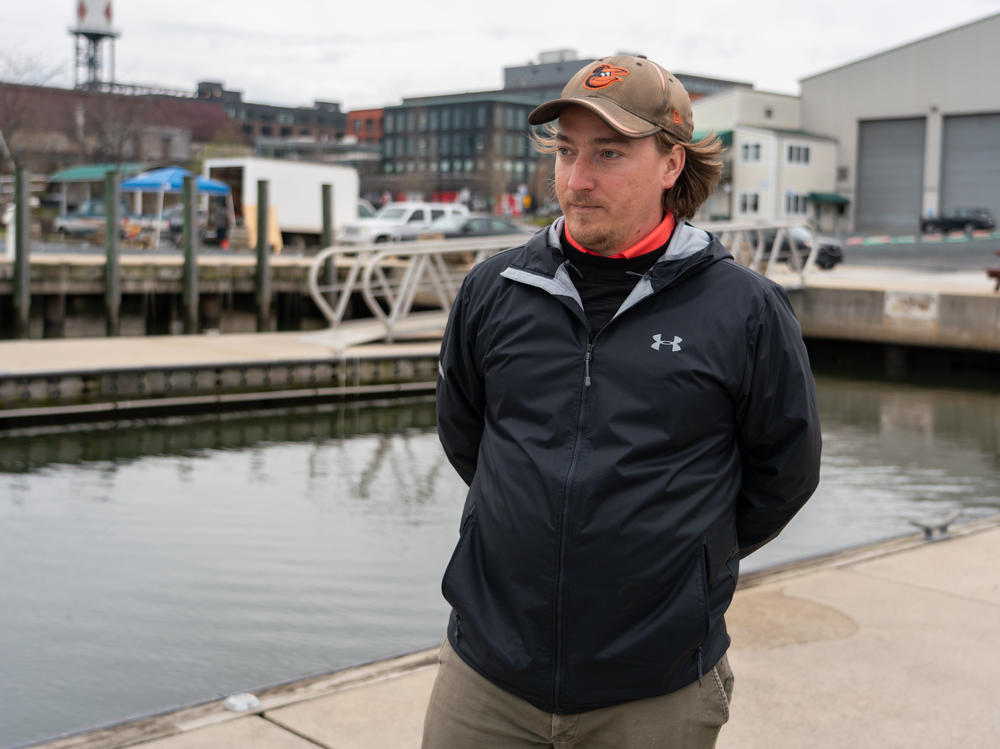Section Branding
Header Content
From longshoremen to charter boats, Baltimore's port closure means lost work
Primary Content
When the container ship Dali struck the base of the Francis Scott Key Bridge early Tuesday morning, it set off a rapid chain of events. The bridge crumpled into the Patapsco River, its twisted metal draped over the ship and its thousands of containers. Eight construction workers and their cars tumbled into the water. Two of the workers are dead; four are still missing and presumed dead. And the whole disaster is now blocking one of the country's busiest ports, the Port of Baltimore.
For many workers at the port, that chain of events means that work has either slowed or stopped completely.
"Quite a few are out of work right now," says Scott Cowan, president of International Longshoremen's Association Local 333 in Baltimore. He represents 2,400 dockworkers and ILA members in the Port of Baltimore.
These are the workers who load and unload ships at the port. They operate cranes. They receive and deliver cargo. They do maintenance and repair work on equipment and containers. They perform clerical work like timekeeping and recording the movement of cargo.
"Some of our maintenance guys and mechanics are still going to work to maintain the equipment in the facility," says Cowan. "But the bulk of our work is the unloading and loading. That's where the labor-intensive jobs are, where we use a lot of people. ... And that's not happening right now."
How long it takes to get the shipping channel cleared will determine how deeply port workers are affected — and the size of the impact to Maryland's economy. Cowan says the closure of the shipping channel is costing $191 million a day in lost economic activity.
The state has set up a dedicated unemployment line for workers affected by the port closure. Through Wednesday, the day after the collapse, fewer than 200 affected workers had made unemployment claims, according to a spokesperson for the Maryland Department of Labor.
And the Maryland Senate president, Sen. Bill Ferguson, said earlier this week that he will sponsor emergency legislation to provide income replacement for workers impacted by the port's closure.
Still, Cowan doesn't think the impact will be a lasting one for Baltimore's longshoremen: "I believe the cargo will rebound here quite strongly and we'll be going into the Christmas season here shortly, bringing goods into this country. So we should be fine."
Smaller waterfront businesses are also affected
Bobby LaPin — "Captain Bobby" — owns and operates Boat Baltimore, offering sailing tours of Baltimore Harbor and the Chesapeake Bay. He docks the 45-foot-long sailboat Saeda at a marina in South Baltimore.
It's a seasonal business, and he'd been gearing up to start cruises on April 1. Now he won't open until May. So the sailboat remains anchored, a blue tarp pulled taut over its deck.
"We decided to push back our opening day ... because we don't want to add to clutter of boats in the harbor while there is a recovery mission still ongoing," he says. "I also don't want to take bookings for people that are simply trying to get on the boat so they can see the devastation of the bridge."
Normally he'd be hiring deckhands and captains to work for the summer, folks who work the winter in Florida and the summer up north. But for now, he's holding off any hiring.
He says it's too early to tell exactly what will be the impact on his business, but he expects bookings from tourists and conventioneers to decline for a time. And since the collapsed bridge is blocking access to the Chesapeake, he can't take longer, more lucrative bookings, where he'd sail out to the bay.
"Obviously, the No. 1 concern economically is going to be to clear the channel so shipping can start. And then after that happens, they have to build a bridge," he says. "But when they build a bridge, they need to block the channel to do so. So, you know, are we even going to have a bridge again?"
Officials say the first step is to remove the debris, then open the shipping channel, and later build a new bridge. President Biden has pledged that the federal government will pay for the bridge's rebuilding, which could take years.
It won't be necessary to close the channel while the bridge is under construction, says Benjamin Schafer, a professor of civil and systems engineering at Johns Hopkins University. "This has been a common challenge for bridge builders going back to at least the late 19th century," and there are a number of construction techniques that will allow the channel to stay open, he says.
A weird few years ahead
Along the waterfront at the Port Covington Marina on Thursday, all the boats were anchored. Next door, the terminal at Cruise Maryland sits empty, the giant ships now directed to other moorings. Just inland from the marina are the sleek new buildings of Baltimore Peninsula, with apartments, office space and restaurants.
Alex Snider is the waterfront operations manager for MAG Partners, the company that's redeveloping the peninsula. He says this time of year is generally quiet at the marina, before the season for recreational boaters picks up in late April or early May.
Even with the bridge collapse and the port closure, Snider talks about everything that's planned at the marina in the months ahead: "There's a sailing club that's going to be here, we've got a kayak launch. We've got the Baltimore Dragon Boat Club's going to be rowing out of here this year. So it's very busy."
Like many in Baltimore, the Key Bridge stirs up feelings of nostalgia for Snider, who used to run boats in the harbor.
"It was a beautiful bridge," he says. "I've piloted driven boats, captained boats under that bridge hundreds and hundreds of times. ... It's going to be a weird few years, not having that there visually."
